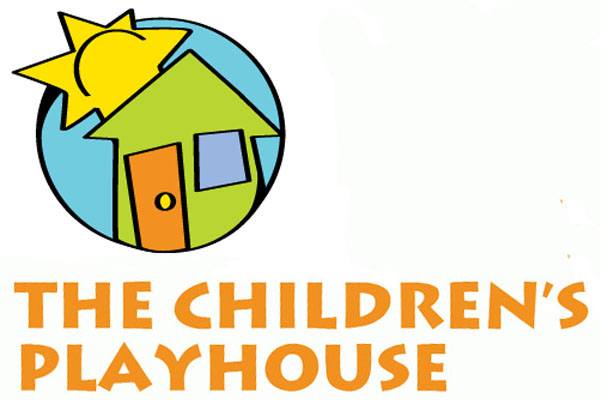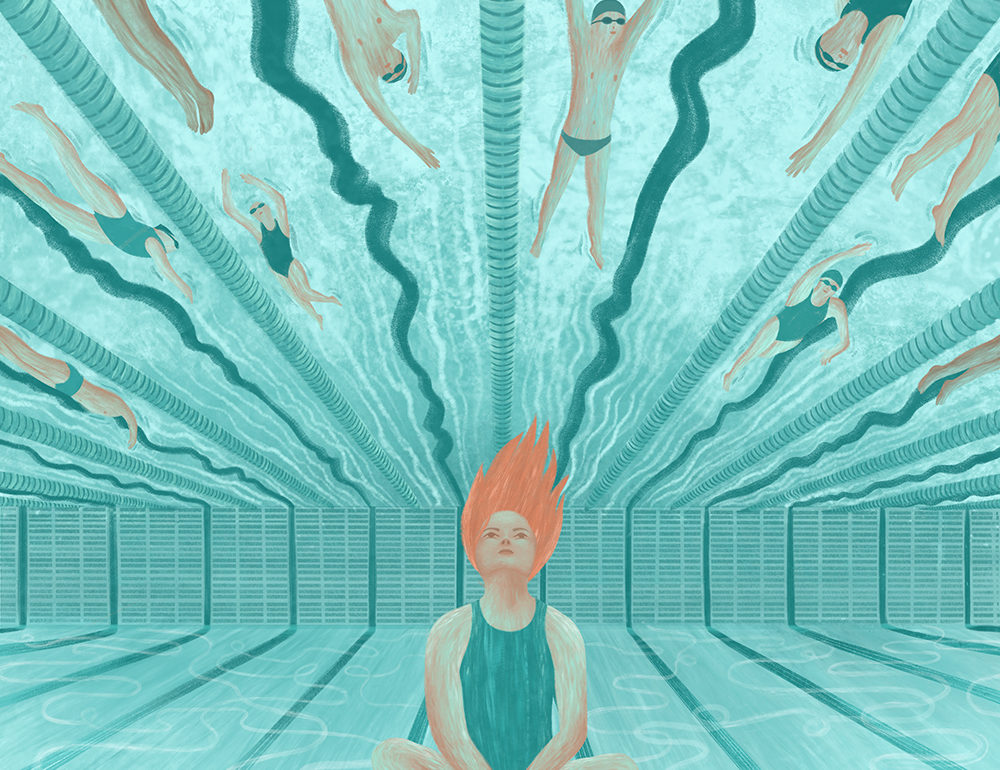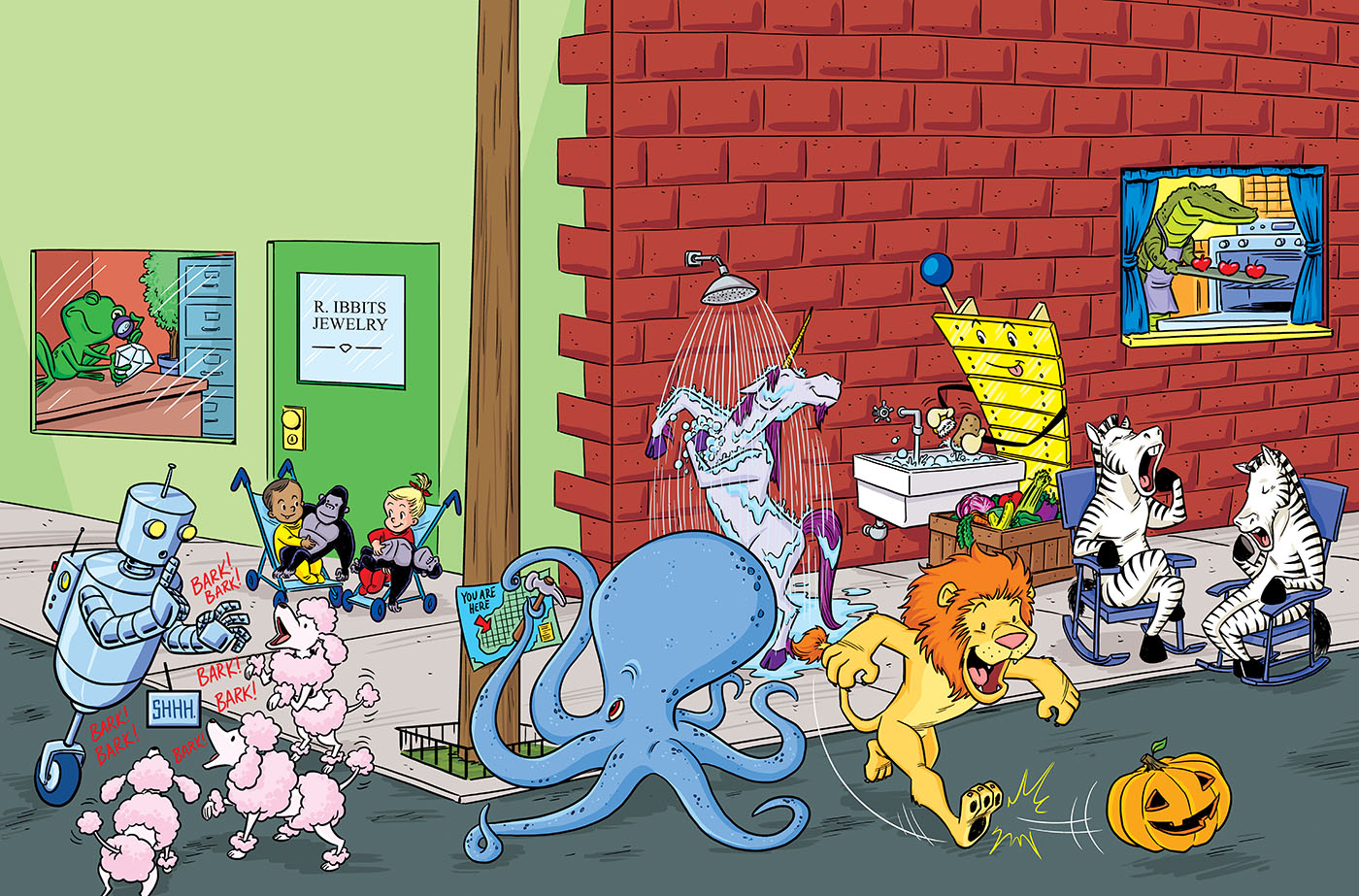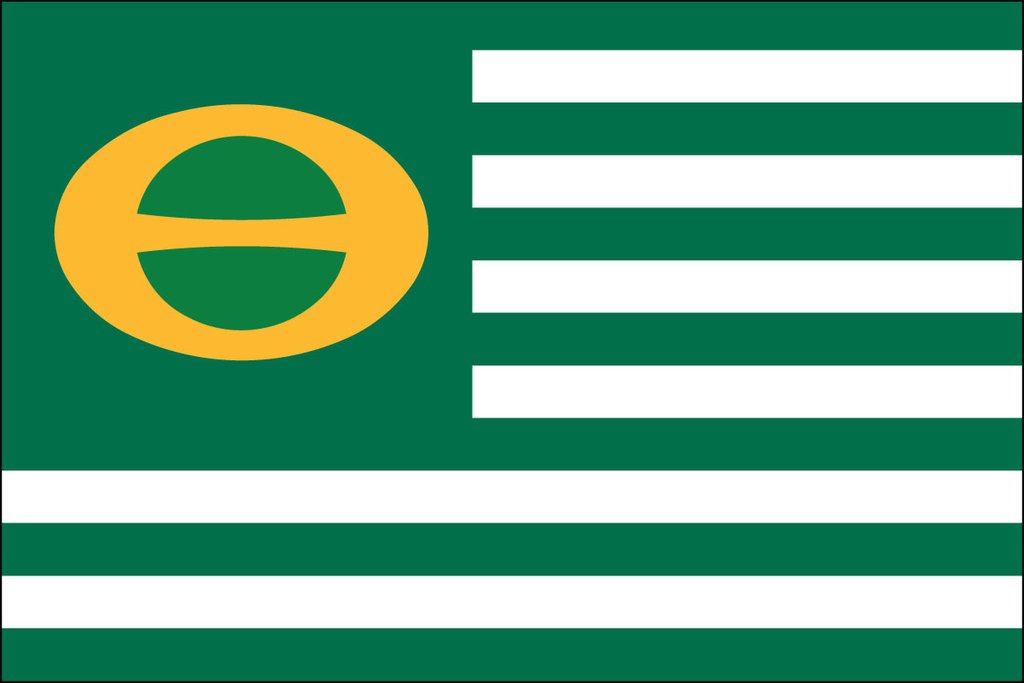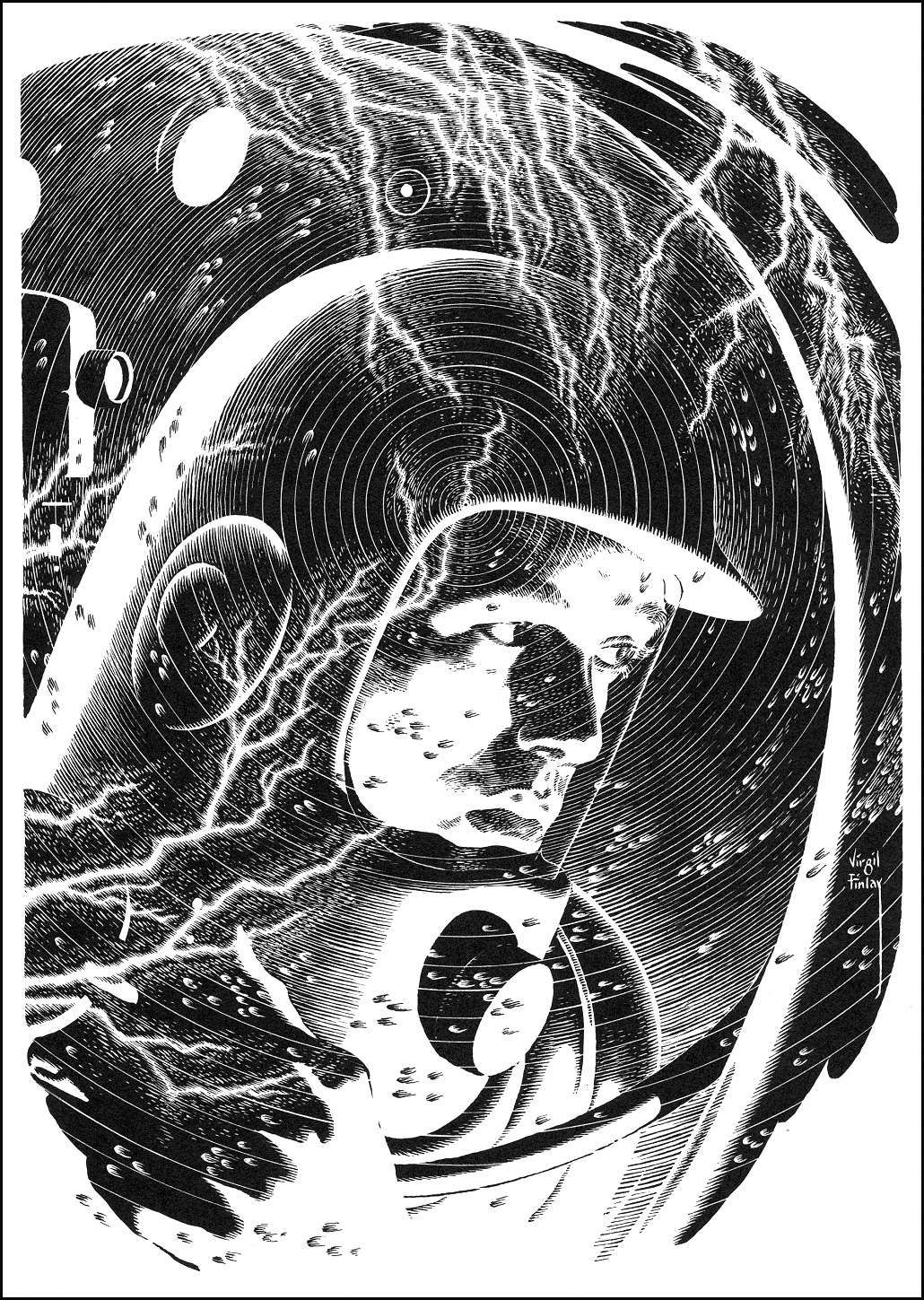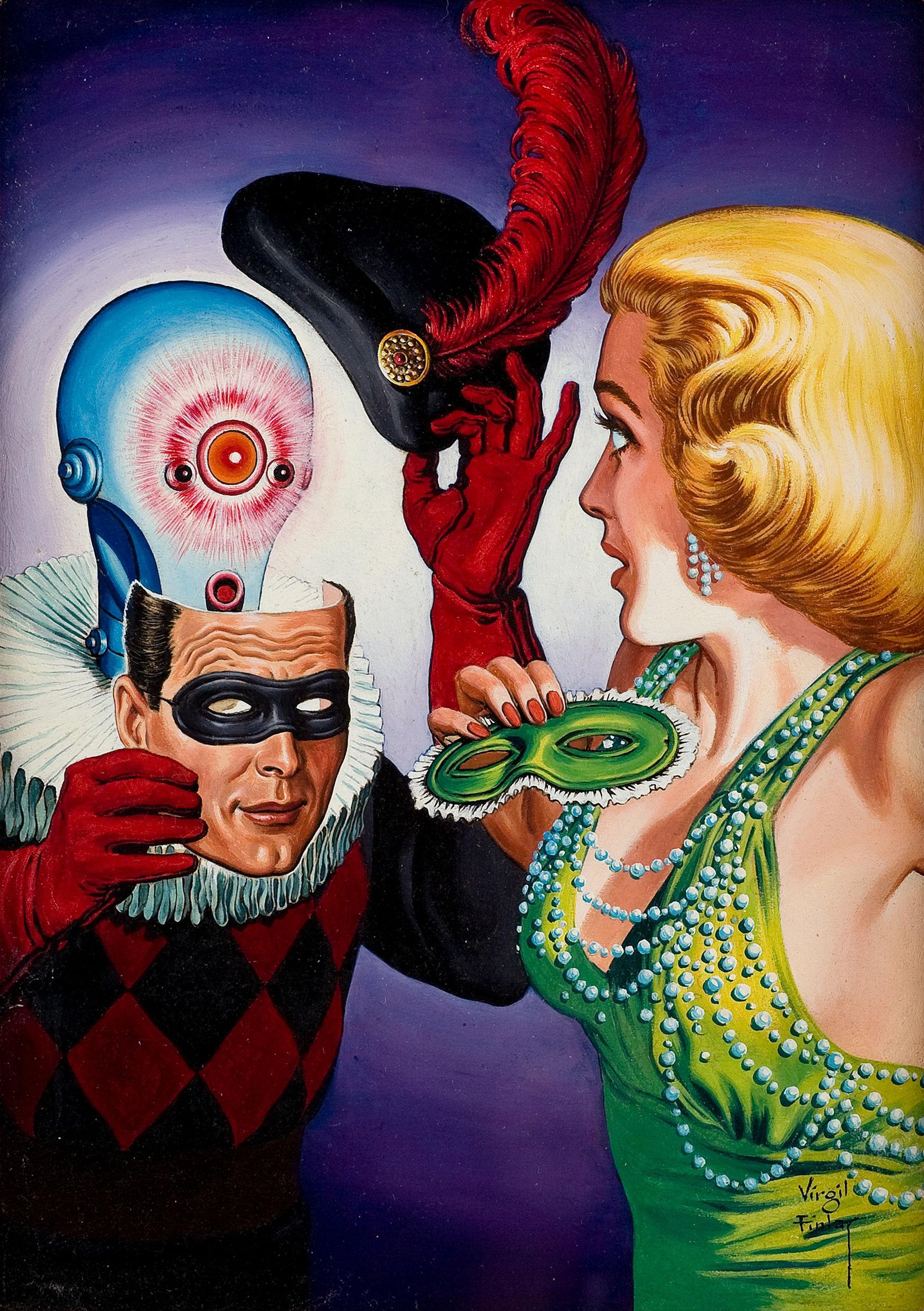
It’s October, and it’s getting a little spooky here at the Club! (The image above is “Swim,” a mixed-medium work by Thien-Huong Vu included in the virtual 2020 Student Scholarship Exhibit at the Society of Illustrators.)
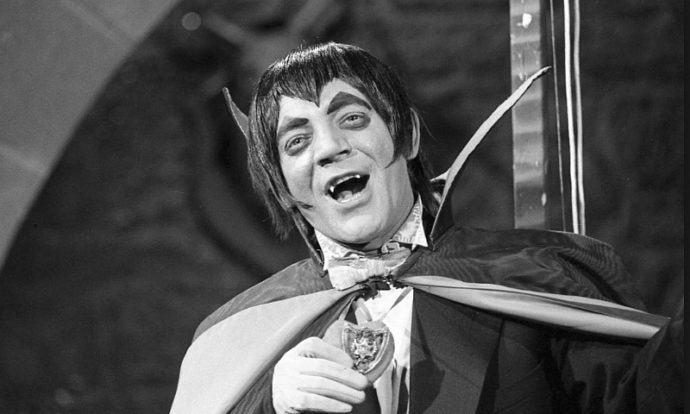 We all have memories of movies and TV shows that gave us our first shiver of playful terror. Mine came from The Hilarious House of Frightenstein (1971), a kids’ variety hour from Ontario, Canada that boasted appearances by horror icon Vincent Price and a talented Canadian comedian named Billy Van who played goofy characters like Count Frightenstein, a vampire who would rather eat pizza than drink blood, the Wolfman, a groovy, hairy DJ, and Grizelda the Ghastly Gourmet, a witch at her cauldron played by Van as a parody of Julia Child. Puppets and pop music and corny jokes abound, all appropriate for kids and presented with a gentle, humorous monster twist. Luckily, several episodes of Frightenstein are available on YouTube—try this one—and there’s also a website with information about the cast and crew.
We all have memories of movies and TV shows that gave us our first shiver of playful terror. Mine came from The Hilarious House of Frightenstein (1971), a kids’ variety hour from Ontario, Canada that boasted appearances by horror icon Vincent Price and a talented Canadian comedian named Billy Van who played goofy characters like Count Frightenstein, a vampire who would rather eat pizza than drink blood, the Wolfman, a groovy, hairy DJ, and Grizelda the Ghastly Gourmet, a witch at her cauldron played by Van as a parody of Julia Child. Puppets and pop music and corny jokes abound, all appropriate for kids and presented with a gentle, humorous monster twist. Luckily, several episodes of Frightenstein are available on YouTube—try this one—and there’s also a website with information about the cast and crew.
We announced last week that Cartoon Crossroads Columbus (CXC) would be online this year, and was rolling out its programming for October 1-4. Since then, CXC has announced several events especially for children, including a “Super Comics Challenge” with Babymouse creators Jennifer and Matthew Holm (Saturday, October 3, 12-12:30pm), “How to Draw Comics with Mike White” (Saturday, October 3, 12:30-12:40pm), a comics-making demo with Mike Cavallero (Saturday, October 3, 1-1:30pm) and a workshop on body language and cartooning with Spongebob Squarepants artist Gregg Schigiel (Sunday, October 4, 10:45-10:55am); above is an animal illustration by Schigiel for Highlights Puzzlemania magazine. Check out the entire CXC schedule of events here (scroll down at the link).
 Artist Ron Cobb passed away on September 21. His name wasn’t well known, but his images and creations resonate in several different American cultural arenas. He was one of the mainstays of 1960s underground art. His political cartoons for The Los Angeles Free Press were so popular that they were also distributed to and published by other alternative newspapers around the country. As part of his involvement in the counter-culture, Cobb also designed the ecology symbol and ecology flag for a 1969 edition of the Free Press and then refused to copyright them, encouraging their widespread use; today’s environmental activists still use the symbol and flag to represent their movement. And later in his career, Cobb became a production designer for Hollywood films, particularly science fiction movies like John Carpenter’s Dark Star (1974), Ridley Scott’s Alien (1979)—where he collaborated with visionaries Jean “Moebius” Giraud and H.R. Giger—and Neill Blomkamp’s District Nine (2009). Here is Steve Riggenberg’s comprehensive obituary, and here is a link to Cobb’s own website, where he writes about his many careers.
Artist Ron Cobb passed away on September 21. His name wasn’t well known, but his images and creations resonate in several different American cultural arenas. He was one of the mainstays of 1960s underground art. His political cartoons for The Los Angeles Free Press were so popular that they were also distributed to and published by other alternative newspapers around the country. As part of his involvement in the counter-culture, Cobb also designed the ecology symbol and ecology flag for a 1969 edition of the Free Press and then refused to copyright them, encouraging their widespread use; today’s environmental activists still use the symbol and flag to represent their movement. And later in his career, Cobb became a production designer for Hollywood films, particularly science fiction movies like John Carpenter’s Dark Star (1974), Ridley Scott’s Alien (1979)—where he collaborated with visionaries Jean “Moebius” Giraud and H.R. Giger—and Neill Blomkamp’s District Nine (2009). Here is Steve Riggenberg’s comprehensive obituary, and here is a link to Cobb’s own website, where he writes about his many careers.
 The Society of Illustrators in New York City is an organization and museum with a mission “to promote the art of illustration, to appreciate its history and evolving nature through exhibitions, lectures and education, and to contribute the service of its members to the welfare of the community at large.” During quarantine, the Society has available virtual tours of previous exhibits (including shows on fashion illustration and the “Art of Spider-Man”), an online gallery showcasing recent student work, coloring pages based on art in their permanent collection, and “SI Kids” resources like draw-along videos and meet-an-illustrator articles. Start here and browse their entire website–and also visit their fantastic Instagram account. (The picture above is “The Dark Plays Tricks” by Jessica Brosius, featured in the Society’s online student exhibit.)
The Society of Illustrators in New York City is an organization and museum with a mission “to promote the art of illustration, to appreciate its history and evolving nature through exhibitions, lectures and education, and to contribute the service of its members to the welfare of the community at large.” During quarantine, the Society has available virtual tours of previous exhibits (including shows on fashion illustration and the “Art of Spider-Man”), an online gallery showcasing recent student work, coloring pages based on art in their permanent collection, and “SI Kids” resources like draw-along videos and meet-an-illustrator articles. Start here and browse their entire website–and also visit their fantastic Instagram account. (The picture above is “The Dark Plays Tricks” by Jessica Brosius, featured in the Society’s online student exhibit.)
Now that we’re headed into October, it’s time to showcase weird Halloween pictures. Let’s begin with the art of Virgil Finlay (1914-1971), the most acclaimed artist for the pulps, genre fiction magazines like Weird Tales and Amazing Stories named after the low-grade paper they were printed on. Although he did some color work for the covers of these inexpensive magazines, Finlay is remembered most for his interior black-and white illustrations, created through a process that Stephen Korshak describes as “a stippling technique in which he would dip his lithographic pen into ink, make a dot and then wipe the pen-top clean after each stipple. Hundreds of dots would create a time consuming, pointillist composition.” Here is Korshak’s biography of Finlay; here is a tribute to Finlay from Robert Weinberg and the aforementioned Society of Illustrators. Below is a sampler of bizarre Finlay images; you can find more at Clark Schenck’s Pinterest gallery of fantasy art. (Since Finlay’s aesthetic can sometimes be erotic and creepy, adults should check out these links before sharing them with children.)
This weekly blog post is written and compiled by Craig Fischer. To send along recommendations, ideas, and comments, contact Craig at [email protected] [.]
